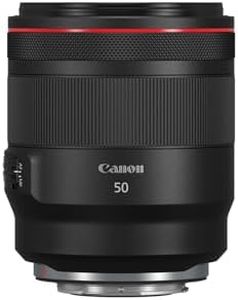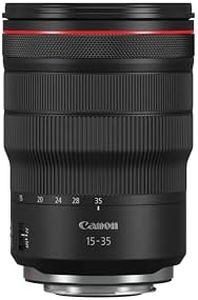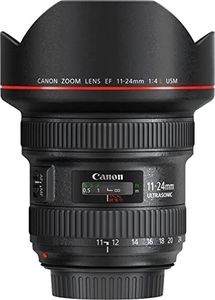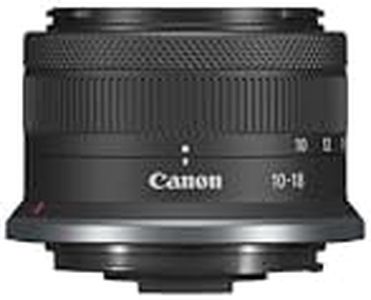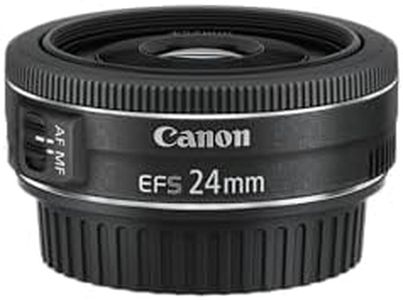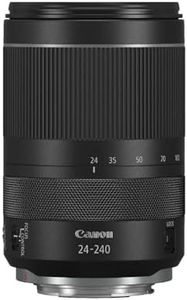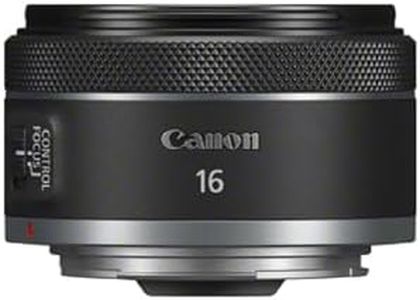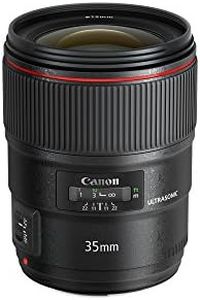We Use CookiesWe use cookies to enhance the security, performance,
functionality and for analytical and promotional activities. By continuing to browse this site you
are agreeing to our privacy policy
10 Best Canon Landscape Lens
From leading brands and best sellers available on the web.Buying Guide for the Best Canon Landscape Lens
Choosing a landscape lens for your Canon camera is all about understanding what scenes you plan to capture and how you want them to look. Landscape photography often emphasizes sweeping vistas, rich detail, and broad angles. The right lens can help you capture the grandeur of nature, cityscapes, or seascapes. To find the best fit, you need to consider a few key lens specifications, as each one affects how your photos will turn out and what scenes you can effectively capture.Focal LengthFocal length is the measurement (in millimeters) that tells you how wide or zoomed-in a lens is. For landscape photography, wide-angle lenses (typically between 10mm and 35mm) are popular because they let you capture more of a scene in a single shot, making vast landscapes look even grander. Within this range, ultra-wide lenses (10-20mm) create dramatic, expansive images and emphasize foregrounds, while lenses in the 24-35mm zone offer more natural perspectives and are better for scenes where you want to avoid distortion. If you like shooting open scenes with a lot of sky and land, stick with the lower end; for tighter, more focused landscapes or if you often include people, try the higher end. Think about the scenes you love to photograph most and let that guide your choice.
ApertureAperture, shown as f-numbers like f/2.8 or f/4, tells you how much light the lens can let in. For landscapes, a wide maximum aperture (a smaller f-number) can be handy for shooting in low light (like sunrise or sunset) or for creative effects, but most landscapes are shot using smaller apertures (higher f-numbers) to keep everything in focus. Lenses with a fixed aperture (such as f/4 throughout the zoom range) are useful for consistent settings, but if you're mostly shooting daytime landscapes, you don't need the widest apertures—just make sure the lens gives you sharp results at f/8 to f/16.
Image StabilizationImage stabilization is a feature that helps reduce blur caused by camera shake, which is especially helpful if you shoot handheld in low light. Some landscape photographers use a tripod, in which case this feature isn’t as critical. If you find yourself hiking or moving a lot, or if you prefer not to carry a tripod, consider a lens that offers image stabilization, as it helps keep your images sharp when shooting in less-than-ideal conditions.
Lens Weight and SizeWeight and size can affect how comfortable your shooting experience is, especially if you plan to hike or travel a lot for landscapes. Larger, heavy lenses can deliver great image quality but might weigh you down on long treks. Compact and lightweight lenses are easier to carry but sometimes come with trade-offs in features or image quality. Think about your shooting habits—if you value portability and will be walking a lot, look for a smaller lens; if you mostly drive to locations and want the very best image possible, a bigger lens may be worth it.
Lens Mount CompatibilityCanon cameras use different lens mounts (like EF, EF-S, RF), and your lens must fit your camera. EF and EF-S are for Canon’s DSLRs, while RF is for their mirrorless cameras. It's important to check which type your camera uses to ensure the lens will work. Always match the lens mount to your camera body, or look for compatible adapters if you want flexibility.
Weather SealingWeather sealing refers to a lens’s ability to resist dust, moisture, and sometimes even light rain. If you often shoot outdoors in changing weather, on beaches, or in the mountains, a weather-sealed lens can protect your gear and give you peace of mind. For occasional or casual use in mild conditions, this feature might not be crucial, but if you’re an adventurous photographer, it can make a big difference in how and where you shoot.
